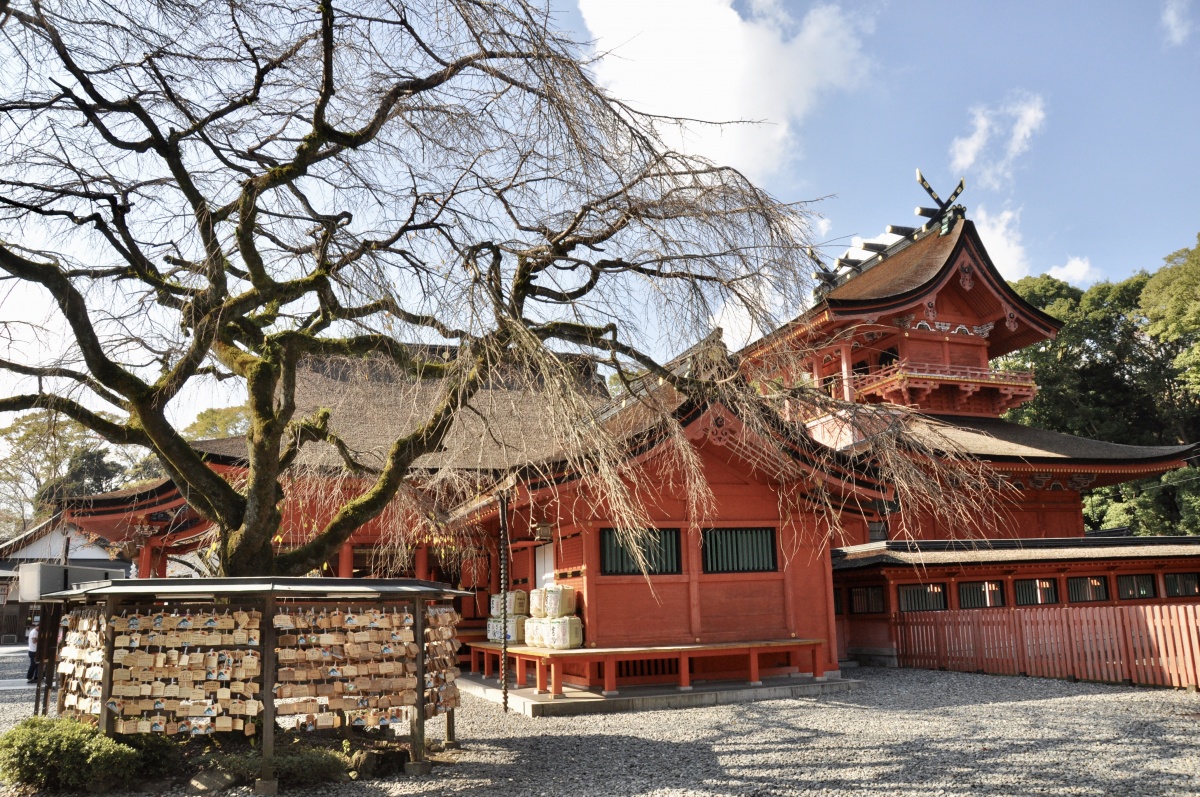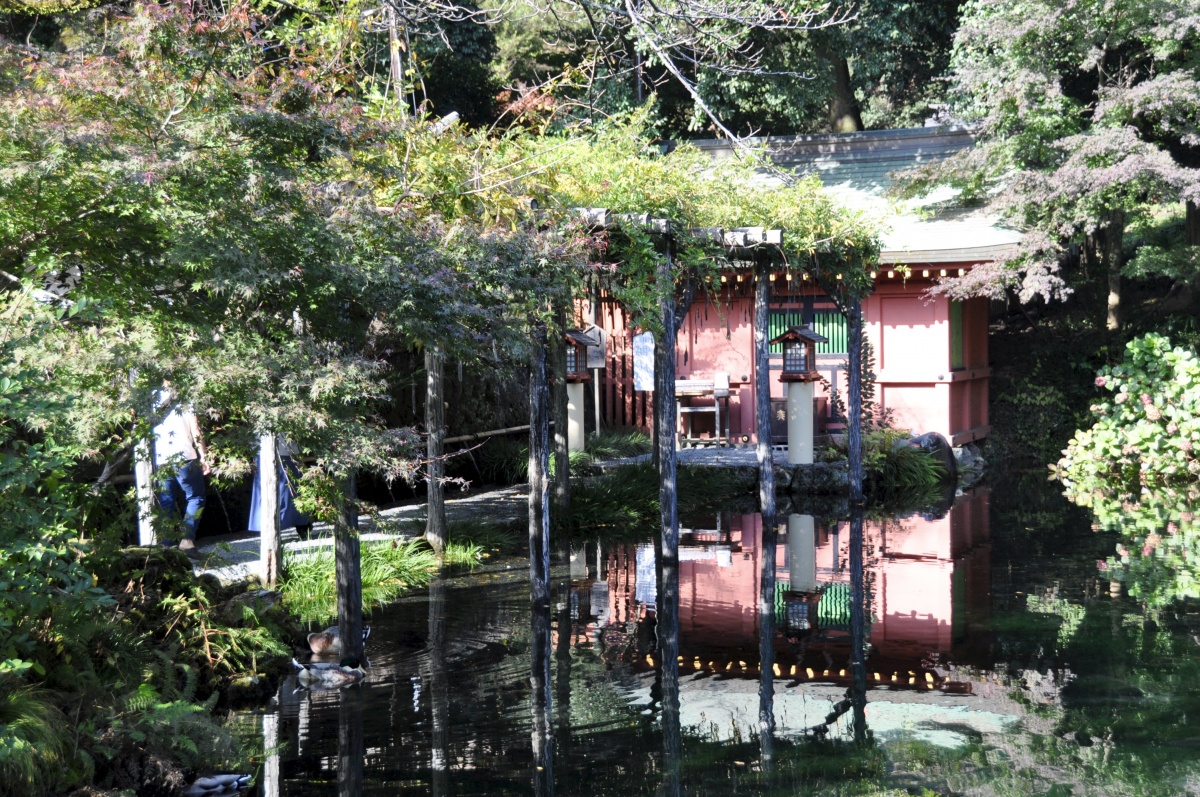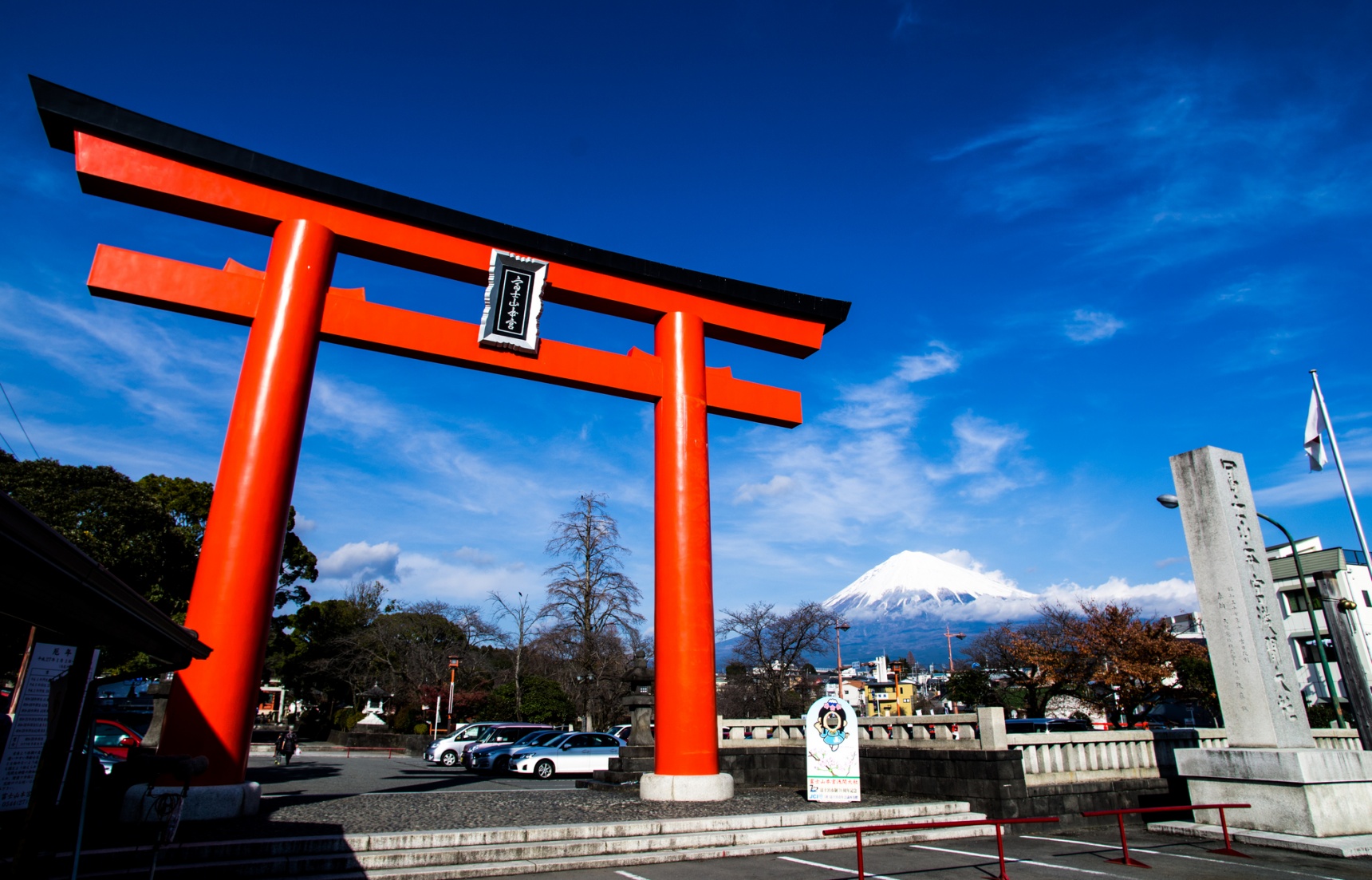The Traditional 'Front Door' to Mount Fuji
Fujisan Hongu Sengen Taisha Shrine (富士山本宮浅間大社) is located in Fujinomiya at the southwestern edge of Mount Fuji. The shrine was the traditional starting point for the Fuji climb when approaching from Kyoto, making it long considered the "front door" to the mountain.
By Michael KanertFujisan Hongu Sengen Taisha Shrine
https://www.youtube.com/watch?v=fjPiOpN2GM4
While Mount Fuji has been quiescent since its last major eruption in December 1707, it was once a much more active volcano. The area around the mountain was said to have been abandoned following a major eruption during the reign of Japan's legendary seventh emperor, Korei, traditionally said to have reigned from 290 to 215 B.C.
In 27 B.C., a shrine was built at the foot of Mount Fuji by Emperor Suijin, the legendary 10th emperor of Japan, to appease the mountain's raging god, Asama no Okami (浅間大神), whose body is believed to form the top of the mountain. While the origin of the name is debated, the title Asama has historically been applied to a number of volcanoes around Japan (and many more have names starting with vowel-s), so it's theorized that Asama was formerly a more general name for a volcano, with Fuji being the nation's most distinctive example. Since the kanji 浅間 can be read as both Asama and Sengen, shrines dedicated to Mount Fuji are known alternatively as Asama and Sengen shrines.

The god Asama no Okami is also believed to have manifested as Konohana Sakuya-hime, the daughter of Oyamazumi no Kami. She married Ninigi no Mikoto, grandson of the sun goddess Amaterasu Omikami, from whom Japan's imperial line is descended. Fujisan Hongu Sengen Taisha specifically deifies Konohana Sakuya, as well as her father Oyamazumi no Kami and her husband Ninigi no Mikoto, with the imperial chrysanthemum crest visible all over the grounds today.

When the legendary hero Yamato Takeru, son of Emperor Keiko, was sent to subjugate the eastern reaches of Japan, he moved Emperor Suijin's original shrine to a spot some 6 kilometers (3.7 mi) north of its current location in the year 110. Emperor Heizei then ordered this shrine to be opulently rebuilt on the present site in 806.
As early as the 10th century, Fujisan Hongu Sengen Taisha was recorded as the head shrine, or ichinomiya, of the former Suruga Province, now central Shizuoka Prefecture. It received endowments from many of the nation's greatest leaders, from the first Kamakura shogun, Minamoto no Yoritomo, to famed local warlord Takeda Shingen, and even received further land holdings from national unifier Toyotomi Hideyoshi.

The present shrine buildings were constructed in 1604 by the first Tokugawa shogun, Tokugawa Ieyasu, to commemorate his victory at the Battle of Sekigahara and subsequent rule over the nation. The extant Inner Shrine, set directly behind the Outer Shrine, has a very rare two-story structure referred to as Asama-zukuri (literally, "Asama Construction").
In 1606, Ieyasu also gifted the shrine with the top of Mount Fuji from the Eighth Station up, meaning the peak of the mountain itself is considered part of Fujisan Hongu Sengen Taisha, now the site of its Okumiya, or "rear" or "innermost" shrine.

In the Edo Period (1603-1868), Fujisan Hongu Sengen Taisha became one of the focal points of a highly popular sect of Fuji worship called Fujiko (富士講). Pilgrims would purify themselves in the shrine's Wakutama-ike pond, which is fed by clear groundwater from Mount Fuji, before making the climb.
However, the move of Japan's capital from Kyoto to Edo (now Tokyo) meant that the pilgrims increasingly favored the northern approach to Mount Fuji, and while you can still go through the surrounding streets to start the climb, unlike the northern trailhead at Kitaguchi Hongu Fuji Sengen Shrine, it's no longer possible to find the traditional trailhead at Fujisan Hongu Sengen Taisha. Nowadays, most people on this side instead elect to start at the Fujinomiya Fifth Station halfway up the mountain.
https://www.youtube.com/watch?v=H6lU2M2lO_0
Fujisan Hongu Sengen Taisha is head of 1,300-plus Sengen shrines all over Japan, and it's one of 25 elements inscribed in the Mount Fuji World Cultural Heritage Site listing registered with UNESCO in 2013.
The grounds are home to some 1,500 cherry trees that bloom in the spring, and the shrine is also known for its yabusame horseback archery festival on May 5 each year, with more general festivities spanning from the fourth to the sixth. The tradition traces its origins back to Kamakura Shogun Minamoto no Yoritomo's hunt at the base of Mount Fuji, which he dedicated to the shrine in 1193.
If you've seen the shrine and you're looking for a bite, you might want to head to Omiya Yokocho (お宮横丁) across the street, where you can find a dozen eateries with a shared outdoor seating area.
Fujisan Hongu Sengen Taisha Shrine
Address: 1-1 Miya-cho, Fujinomiya City, Shizuoka





